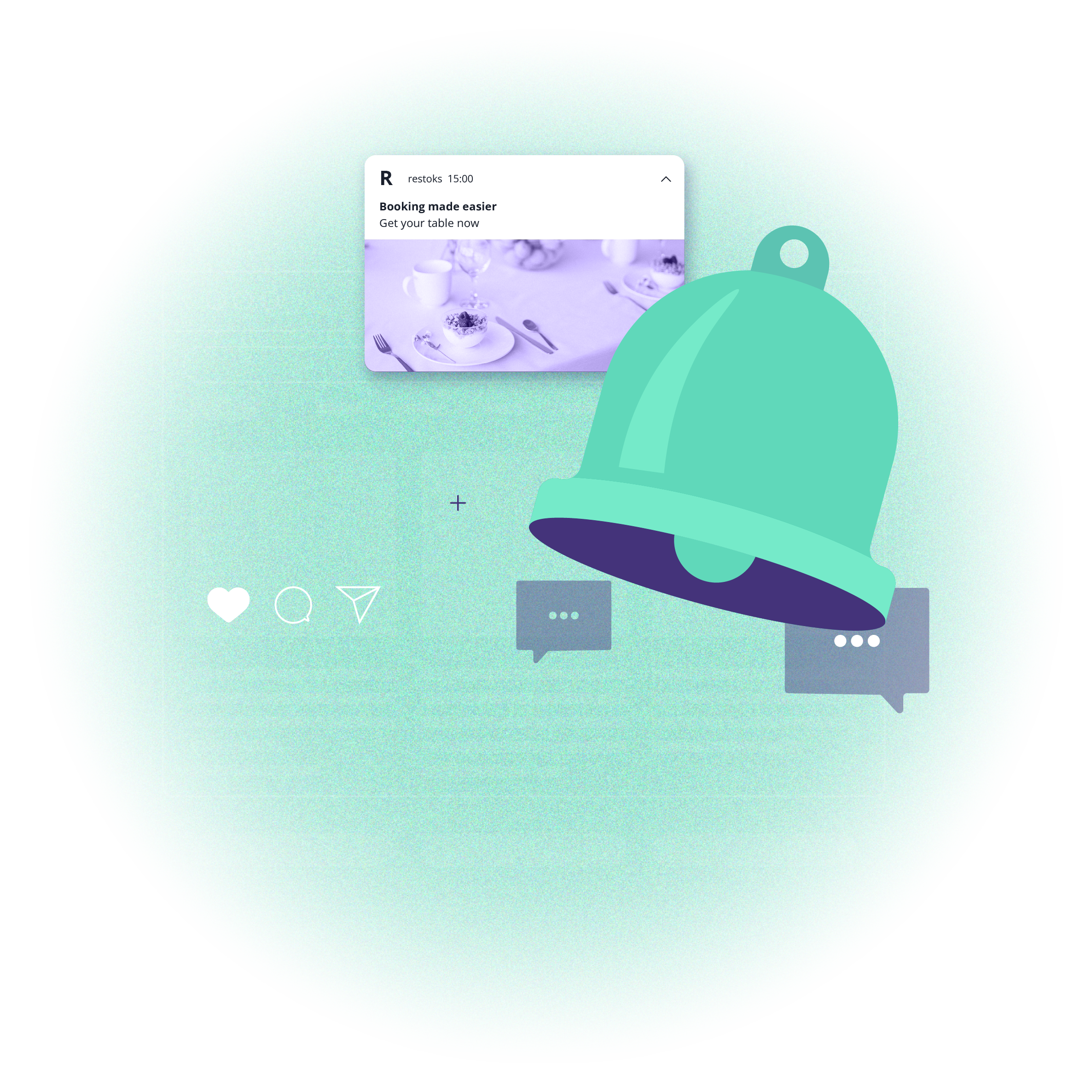6 tips on how to create short texts that sell
 Aleksandra Kozioł
Aleksandra Kozioł
In marketing, space is of the essence. Sometimes, for example, when you’re writing a blog post, you have more of it, and you can easily convey your thoughts within 1,000 or more words. In other situations, you need to be brief and concise. That’s when you’re writing ads, push notifications or slogans. Here, every word and every comma matter. And that’s what we want to tackle today – we want to show you a few tips that will help you write effective copy.
When you’re writing ads to be displayed in Google Ads, you have just 30 characters for the headline and 90 characters for the description. On Facebook, it works similarly. For example, the copy on the graphic shouldn’t take more than 20% of the available space, and that’s not a lot. And what about web push? Here, the title should have less than 50 characters, and the content – less than 100 characters.
So, what should you do to fit in these tight frames?
Think about the reader!
The first thing you should do is change your way of thinking. Don’t write about what you want to write about. Write about what your customers want to read. Don’t write sales copy just for the sake of writing a sales copy. Every promotional text you publish has to be well-thought-out and purposeful. There’s no room for art for the art’s sake. If you send uninteresting messages, you won’t get any spectacular results, and you can discourage people from following you.
Above anything else, decide what’s the most important part of your message and concentrate just on it. Let’s use an example; suppose you want to inform your customers that there is a special promotion at your store and every order is shipped for free, but just for a week. What could you write to your customers?
Title:Free delivery starting now!
Content:This week, you get free delivery for whatever you order. Check new arrivals and buy now!
27 characters for the title and 88 characters for the copy, perfect for push notification.
This message is:
Concentrated on the user (notice that we’re not saying “we’re offering”, we’re saying “you get” – talk to your customer, tell them what’s in it for THEM.)
Clear (we explain in the message that there is no threshold, every order counts; the user is also informed about the time limit of the offer)
Encouraging (it has two CTAs – check our new arrivals and buy now)
Catch attention quickly and be ultra-specific
In short, in sales copy, there’s no room for an introduction. You need to catch the reader’s attention as quickly as possible. Just get to the point, convey the main message, and start with the first word. That’s what we did in the title, which is usually the first thing the recipient sees – “free delivery starting now” – everything is to the point and attractive for the customer (who doesn’t want free delivery?).
Add short and clear CTA
When it comes to short sales copy, you have to be 100% clear about what you want to achieve. That’s why you need a straightforward CTA. Leave your customer with no doubt about what they should do next. Good examples of short CTAs are:
Buy now
Register today
Download now
Try for free
Sign up now
And they almost always put emphasis on the question of time. After all, you want your customer to buy/download/register today, not in three weeks, correct?
Drop unnecessary words
Is it easy to make your message longer? Undoubtedly! That’s why you should edit relentlessly and cut all the words that don’t add anything specific. Every word that doesn’t add a specific value just takes up the necessary space. Take a look at the same push notification and see how it could look before editing:
Only this week, you can get free delivery for every product that you order in our store. Check out what’s new in our offer, and buy now!
135 characters, way too many for push notification.
Take a look at the crossed words and see how much space they take.
Onlythis week, youcanget free delivery forevery product thatyou orderin our store. Check outwhat’s new in our offer, and buy now!
Each of these words can be removed from the copy or written in a different, shorter way. That’s the way of thinking when you don’t have much space. What you can do, though, is start with a longer message and gradually shorten it by dropping unnecessary words. For many people, that’s the easier way. You can also start with an outline if that helps!
Answer 5W questions
If you have a hard time deciding what should be included in your copy, try answering 5W questions. These are:
Who?
What?
When?
Where?
Why?
This way, you gather all the crucial information in one place. As a result, it’s easier to decide what should be included in your copy. Ideally, you should put all the answers in your copy, but that’s not always possible. Let’s go back to our e-commerce example:
Title:Free delivery starting now!
Content:This week, you get free delivery for whatever you order. Check new arrivals and buy now!
The first question is “who?” – in our case, we don’t have to answer that question in the copy because every push notification has a link indicating the store’s name. You can also use your store’s logo in the notification to help the reader know who’s talking.
The second question is “what?” – in our case, the answer is free delivery.
“When?” – this week.
“Where?” – that’s self-explanatory; at the store offering this special promotion, there’s no need to explain that to anyone.
“Why?” – that’s, more often than not, tricky. Usually, explaining why you’re doing something takes more time to explain your way of reasoning. If you can’t squeeze that in your copy, that’s fine.
As you can see, our one short push notification answered four out of five W questions, and that’s a great result, provided we used just 115 characters for the whole thing.
Follow the 4S rule
In short copy, everything has to be short, and that comprises:
Words
Sentences
Paragraphs
Sections
That’s what the 4S rule is all about. Of course, in short texts, like ads and notifications, there will be no paragraphs and sections, but short sentences and words are essential. Why? Because they are quicker and easier to understand, even if your customer is not fluent. If possible, avoid complex sentences and eloquent words. Use Thesaurus.com to find simpler alternatives.
Additionally, as a part of the 4S rule, you should use contractions and known abbreviations – write “don’t” instead of “do not”, “St.” instead of “street”, “info” instead of “information”, etc.
If you want to add a link to your message, and the CTA button is not enough, use a link shortener like Bitly.
Try these techniques on your push notifications!
Now, it’s time to put the theory into practice! Try to improve your push notifications and ads using the methods listed above and see if that works for you. And if you haven’t tried push notifications yet, now is a good time to start!
Take a look at our use cases, create your free account and start working on your first push notification!

Content Specialist @PushPushGo
Editor and writer. She is interested in media and new technologies.
Try PushPushGo to engage and connect with your audience.
Create an account and start testing!





